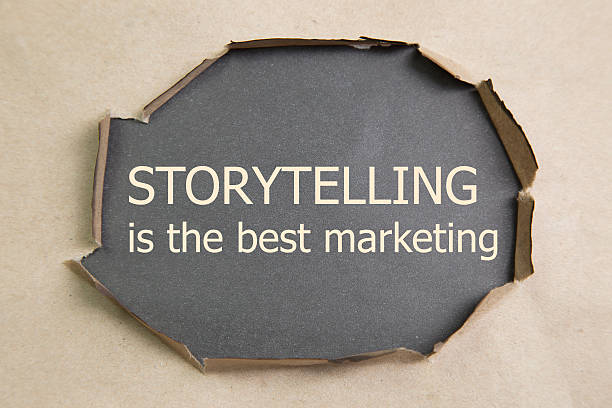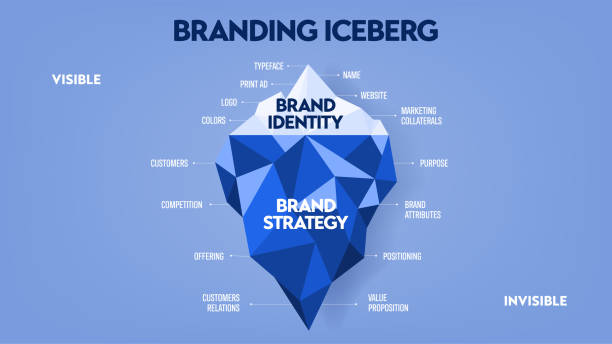What is your brand really telling the world about your business? In today’s competitive market, a powerful corporate identity is more than just a logo or tagline—it’s the very foundation of how people perceive your business. Additionally, companies with a well-defined corporate identity stand out, build trust, and create lasting connections with their customers. But with so many branding solutions out there, how can businesses ensure they’re sending the right message?
So, in this guide, we’ll explore the key branding solutions that can transform your corporate identity from ordinary to extraordinary. By mastering the right strategies, you’ll not only create a recognizable presence in your industry but also foster loyalty, strengthen credibility, and drive long-term success. So, let’s dive into the essentials of building a powerful corporate identity that aligns with your brand’s unique values and goals.
Why Corporate Identity Matters More Than Ever
Corporate identity is the essence of a brand. Also, it encompasses the visual, emotional, and even philosophical elements that make a business unique. Additionally, with consumers faced with endless options, brands that stand out are those that convey a clear, cohesive identity.
From the colors you choose to the words you use, every piece of your branding puzzle matters. Also, a strong corporate identity helps in:
- Building Brand Recognition: People remember brands that are visually distinctive and aligned with memorable values.
- Establishing Trust: A consistent, professional identity signals that your business is reliable and serious about its mission.
- Differentiating from Competitors: When every business in your industry looks and sounds the same, a unique identity helps you stand out.
By investing in your corporate identity, you’re setting your business up for growth and long-term resilience.
Key Elements of a Powerful Corporate Identity
To craft a brand identity that resonates, you need to focus on several foundational elements. So, each piece works in harmony to communicate the right message to your audience.
1. Logo Design
Your logo is often the first impression your brand makes. Also, a well-designed logo captures the essence of your business in a single image. So, it should be:
- Memorable: A unique design that stands out.
- Relevant: Colors, fonts, and shapes should align with your brand’s personality.
- Versatile: It should look great on all mediums, from digital to print.
Think of iconic brands like Apple or Nike. So, their logos are instantly recognizable, timeless, and reflective of the brand’s values.
2. Color Palette
Colors evoke emotions and associations, and choosing the right color palette is crucial to establishing your brand’s identity. So, consider:
- Psychology of Colors: Different colors evoke different emotions. Also, blue often represents trust, red conveys energy, and green suggests growth.
- Consistency Across Platforms: Use the same colors across all branding materials to create a cohesive look.
- Audience Preferences: Research your target audience’s preferences to select a color scheme that appeals to them.
A carefully chosen color palette builds a visual identity that’s easily associated with your brand.
3. Typography
Typography is more than just the font style; it’s a reflection of your brand’s personality. So, is your brand voice bold and modern? Or, is it classic and refined?
- Font Families and Styles: Choose fonts that align with your brand’s values. Serif fonts convey tradition, while sans-serif fonts feel more contemporary.
- Readability: Ensure fonts are legible across digital and print formats.
- Hierarchy: Use different font weights and sizes to create visual hierarchy in your communications.
The right typography adds a layer of professionalism and distinctiveness to your brand.

4. Brand Voice and Messaging
A corporate identity isn’t just visual; it’s also about how you communicate. Also, a strong brand voice builds familiarity and consistency.
- Tone: Decide if your tone is formal, conversational, or somewhere in between. So, align it with your target audience’s expectations.
- Messaging Consistency: Your values, promises, and personality should remain consistent across all channels.
- Taglines and Slogans: Create memorable phrases that capture the essence of your brand. Additionally, these can serve as quick, impactful reminders of what you stand for.
Crafting the right voice can help create deeper connections with customers, making them feel understood and valued.
5. Imagery and Visual Style
The photos, illustrations, and graphics you use all play a role in shaping your brand’s identity. So, visual elements can be just as powerful as words.
- Style and Filters: Whether bright and bold or soft and minimalistic, your imagery should align with your overall aesthetic.
- Consistency: Use a similar style for all visuals to create a cohesive look.
- Brand-Aligned Visuals: Make sure your images reflect your industry, audience, and brand message.
Consistency in visuals reinforces your identity and makes your brand feel more cohesive.
Building Corporate Identity with Branding Solutions
Now that we’ve covered the elements, let’s explore branding solutions that can help your business establish a powerful identity.
1. Digital Branding
With most customers discovering brands online, a digital-first approach is crucial. So, digital branding includes:
- Website Design: Your website should embody your brand’s personality and offer a seamless user experience.
- Social Media Profiles: Each profile should reflect a cohesive identity, from cover photos to profile images and tone of posts.
- Email Marketing: Every email, from subject line to signature, should communicate your brand’s unique style and voice.
Digital branding ensures you’re making a strong impression on every digital platform.
2. Content Marketing
Content marketing is about creating value for your audience while reinforcing your brand’s identity. So, consider:
- Blog Posts and Articles: Use a consistent brand voice and relevant visuals to convey your message.
- Videos and Webinars: These can humanize your brand. Also, offering a way for audiences to connect on a deeper level.
- Infographics and eBooks: Use branded visuals and information to establish thought leadership.
Consistent, valuable content marketing builds trust and positions your brand as an authority.
3. Corporate Brand Guidelines
Brand guidelines ensure that every team member understands and applies the brand’s identity consistently. Also, a good set of guidelines includes:
- Logo Usage Rules: Specifications for logo sizing, placement, and spacing.
- Color Codes and Typography: Ensure consistent use of colors and fonts.
- Tone and Messaging Tips: Guidelines for maintaining a consistent brand voice.
With a clear set of rules, your brand will always look and sound the same, no matter who’s representing it.
4. Internal Branding
Internal branding helps employees feel connected to the company’s mission. So, this can include:
- Employee Training: Educate staff on brand values and messaging.
- Brand Culture: Foster a workplace culture that aligns with the brand’s identity.
- Employee-Generated Content: Encourage employees to create content that aligns with the brand. Also, making them brand ambassadors.
Internal branding strengthens corporate identity from the inside out.

Measuring the Success of Your Corporate Identity
Once your corporate identity is established, it’s essential to measure its effectiveness. So, key metrics to consider include:
- Brand Recognition: Surveys and feedback can reveal how recognizable your brand is in the market.
- Customer Engagement: Track social media engagement, website traffic, and other indicators of customer interest.
- Employee Engagement: Happy, engaged employees are often more aligned with the brand’s values and mission.
- Sales and Revenue Growth: A strong brand identity can contribute to increased revenue as customers build loyalty.
Regularly assessing these metrics will help you adjust your branding efforts as needed for ongoing success.
Future Trends in Corporate Identity and Branding
Corporate branding is constantly evolving. So, here are some emerging trends to consider:
- Sustainability Messaging: Brands are increasingly prioritizing environmental values, creating identities that resonate with eco-conscious consumers.
- Inclusive Branding: Creating a brand identity that is inclusive and representative of diverse audiences strengthens trust.
- Personalized Experiences: Tailoring branding to specific customer segments helps companies connect on a deeper level.
- Digital Innovation: Leveraging augmented reality (AR) or virtual reality (VR) can create memorable brand experiences.
By staying on top of these trends, you can ensure your corporate identity remains relevant and engaging.

Final Thoughts: Start Mastering Your Corporate Identity Today
Mastering your corporate identity is an ongoing journey, but the rewards are well worth the effort. A strong, cohesive identity not only attracts and retains customers but also strengthens internal culture and builds credibility in the marketplace. Additionally, take the time to carefully develop each element of your branding, from your logo and color palette to your messaging and content strategy. So, by implementing these solutions, you’ll be well on your way to establishing a corporate identity that resonates, connects, and inspires.
So, ready to transform your business identity? Start with the foundational elements, utilize the right branding solutions, and stay agile to adapt to emerging trends. Also, the world is ready to know your brand—make sure it’s saying exactly what you want.
This guide empowers readers with the knowledge and steps they need to create a compelling corporate identity that positions their brand for long-term success.









[…] Search – 13Nov2024 Brand Development Transform Your Business With Effective Corporate Branding Brand Development Mastering Corporate Identity Through Branding Solutions: A Complete Guide […]